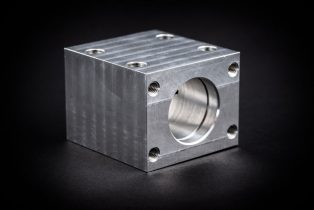
Thread forming and thread rolling are processes for forming screw threads, with the former referring to creating internal threads and the latter external threads. In both of these processes threads are formed into a blank by pressing a shaped die against the blank, in a process similar to knurling. These processes are used for large production runs because typical production rates are around one piece per second. Forming and rolling produce no swarf and less material is required because the blank size starts smaller than a blank required for cutting threads; there is typically a 15 to 20% material savings in the blank, by weight.
Materials with good deformation characteristics are necessary for rolling; these materials include softer (more ductile) metals and exclude brittle materials, such as cast iron. Tolerances are typically ±0.001 in. (±0.025 mm), but tolerances as tight as ±0.0006 in (±0.015 mm) are achievable. Surface finishes range from 6 to 32 micro-inches.











